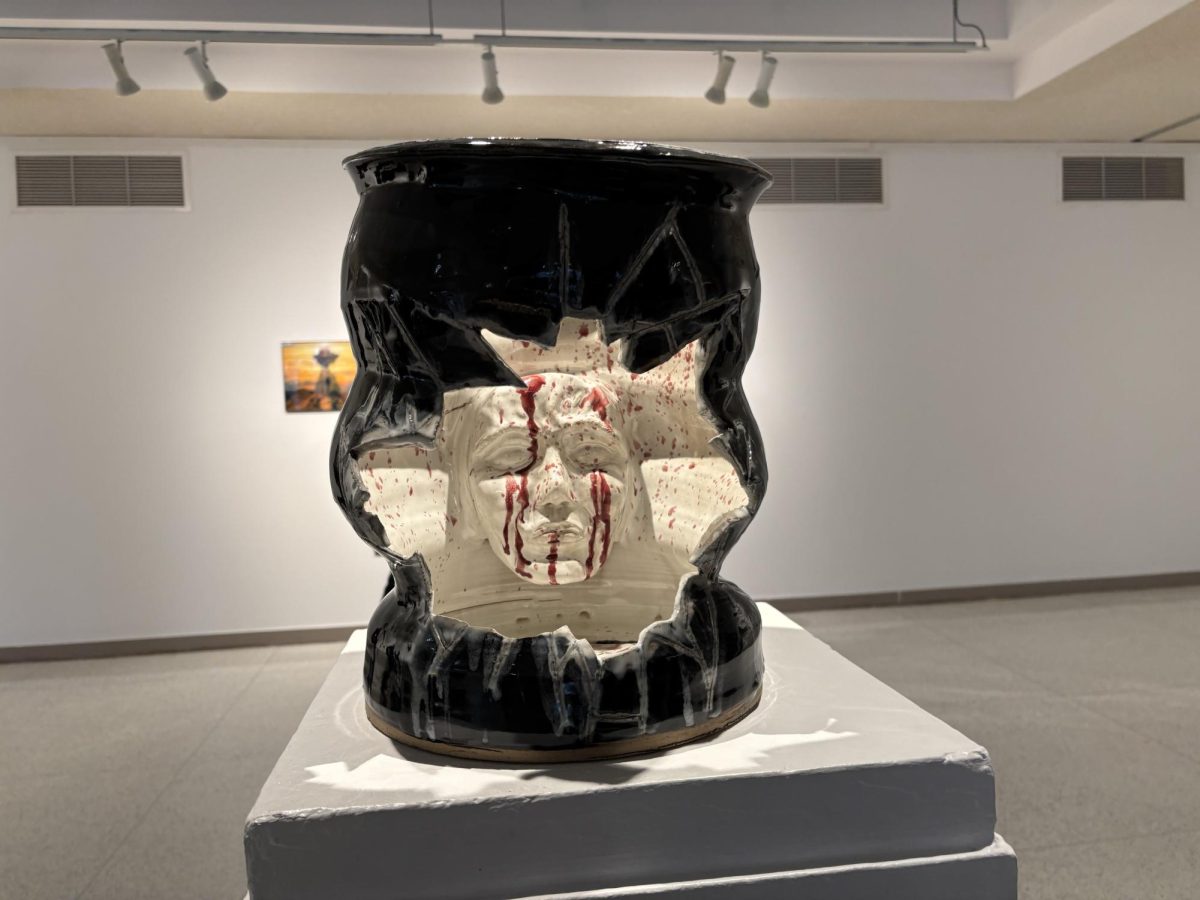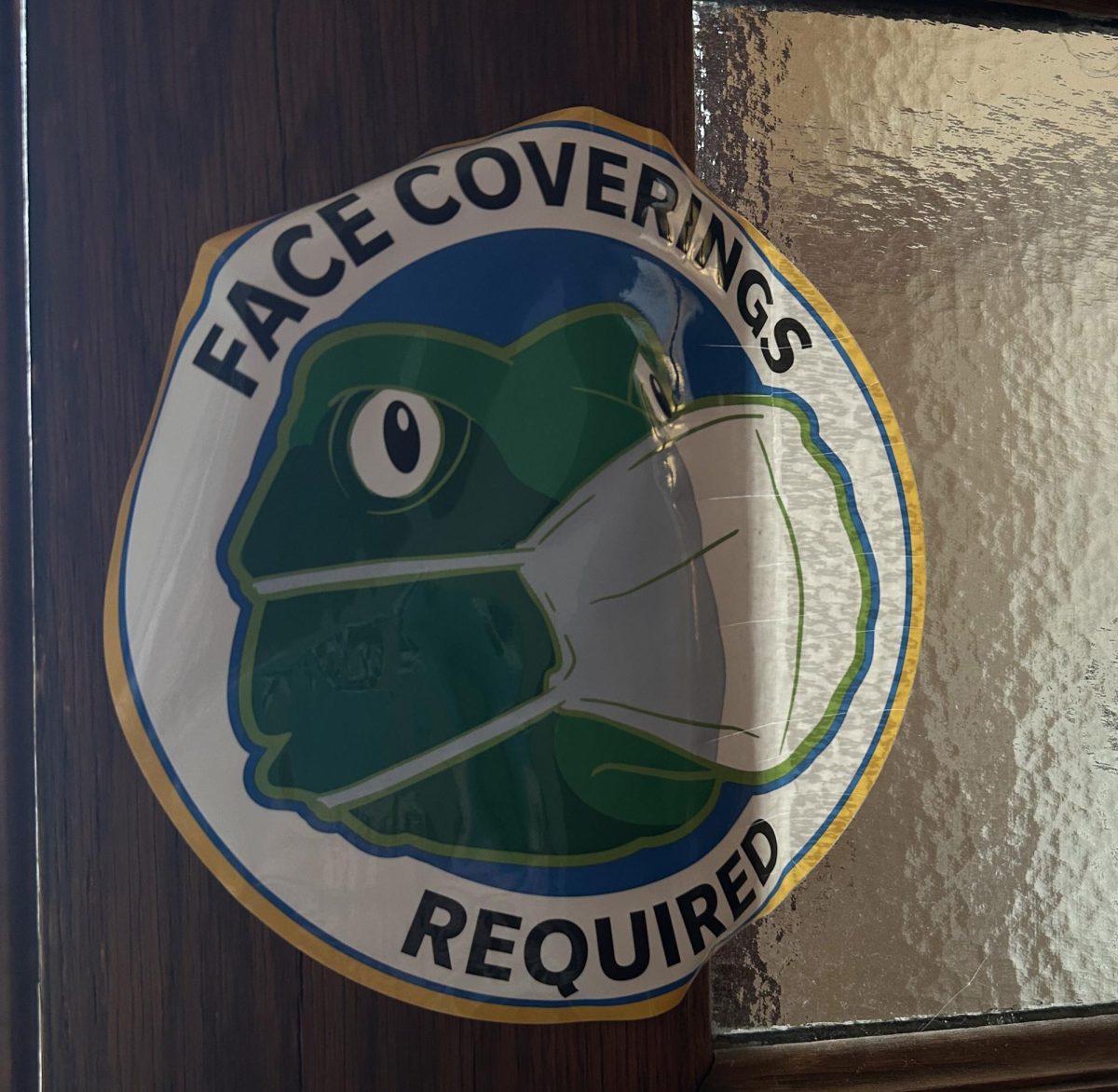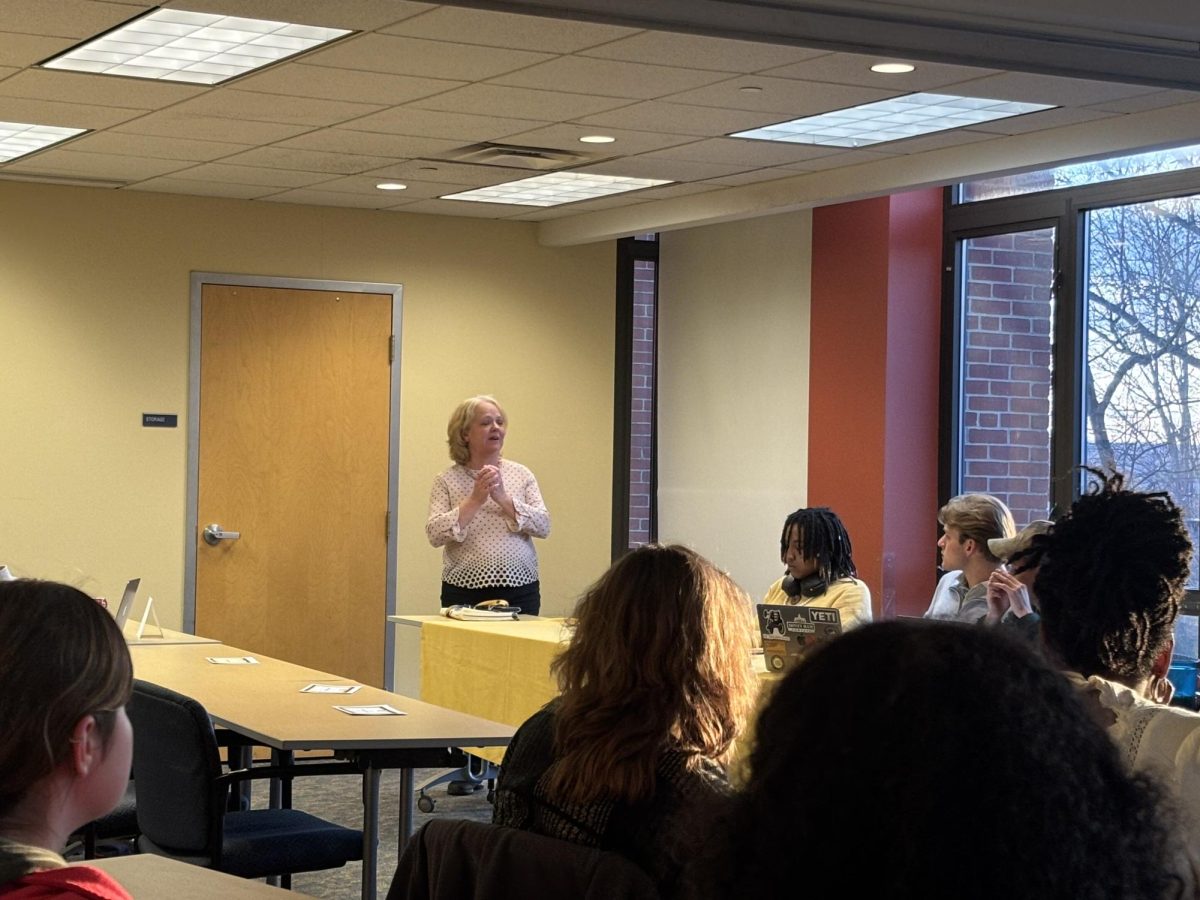According to the Department of Energy & Environmental Protection, the average college student produces 640 pounds of solid waste each year, but inside Allegheny’s Gator Green Living Community, Allegheny students prove that number doesn’t have to be the norm. Through composting, energy conservation and eco-conscious habits, they’re redefining what it means to live on campus without leaving behind a footprint.
At first glance, the Green Living House — currently located at 312 Loomis St. — looks like any other special interest housing on Allegheny’s campus, but step inside and you’ll find a community built on sustainability, where students trade disposable for reusable and car rides for bikes.
Mazzie Standish, ’25, has resided in Green Living since the fall semester of her sophomore year and cannot imagine living anywhere else. “It’s kind of been the most rewarding aspect of Allegheny for me: the basis of where my friends have come from and where I feel sane,” she said.
The Director of Sustainability and one of the founders of Green Living, Kelly Boulton, ’02, is the faculty advisor to Allegheny College Bike Share, the Carrden and the Green Living house. “Really, to be honest, what it means to live in the house shifts over time in a response to who is living in the house and what interests and skills that they bring to the table, ” Boulton said.
Green Living has had many innovations and inventions over the years, ranging from implementing rain gardens and rain barrels to compost bins and planting fruit trees.
“There was a student who was really into chickens and asked if he could bring his chickens to campus, and so for several years, we had a chicken coop and chickens laying eggs,” Boulton said.
Currently, Green Living students have been hard at work monitoring their electrical meters to track how much electricity is being used weekly, as well as timing each other’s showers to reduce water consumption.
“I really like water conservation. When we came back from winter break, Elsa (Waidelich) got a waterproof timer to count in our shower, and it’s fun.” said Madi Kermis, ’25. “I love French Creek, and I like all of the community efforts to protect French Creek, like participating in the French Creek Cleanup.”
Some new inventions in the house include a coat rack made out of a tree and the removal of all paper towels in favor of rags and more reusable methods. Kermis talked about implementing a fun new challenge of totaling each house member’s trash for a week to see how well they recycle, possibly during Earth Week in April.
Green Living collaborates mainly with the Students for Environmental Action (SEA) and the Green Students of Color Society (Green SOCS) to hold events since Green Living is not a club and therefore does not have a budget with ASG. The Green clubs have held potlucks at the Green Living House, which gives the events more of a homey feel.
“It’s cozy,” said Elsa Waidelich, ’25. “It’s really nice to have this space for that kind of event because you can do it in Carr Hall, but it is really nice to feel like you are in a house.”
Green Living house was founded in 2010 in Allegheny Hall, a dorm building that used to reside on the corner of Allegheny St and North Main St. They were there for two years before moving down to 296 Loomis St. where they lived for the last decade.
“It used to be a special interest house, and there was an understanding that that was kind of the address we stayed at,” Boulton explained, referring to 296 Loomis St. “There’s been a lot of changes in Res Life, and so the house was given to the Phi-Delt’s. They currently live there, but we will see for the future.”
According to Boulton, there used to be a formal special interest housing process in Res Life, and there is something similar in place now in terms of getting a house on campus. Though, before it used to be an application process where you had to specify what your special interest house would bring to campus, how you would educate the student body and improve student life.
“Our house was formed as a way to let students live together where they could practice sustainable living, they could learn from each other, and they could adopt new habits and test them out,” Boulton said.
“Ideally, we would like to have a lot more practices outside like we used to,” Standish said. “I think we had a lot more pre-Covid at the old house, but we can’t really take action on any of those yet without knowing where we are going to be next year and if we will get the old house back at some point.”
Residing in the basement of 296 Loomis St., the Allegheny College Bike Share began in 2012 and is an ASG-approved student group on campus that teaches students about fixing their own bikes and the upkeep it takes. They also provide free bikes for students that they tune up and place at the Lawrence Lee Pelletier Library, where you can check them out with your student ID.
According to Boulton, the large overlap between students in Green Living and Allegheny College Bike Share adds to the reasoning behind wanting to have their old house back for the next academic year, despite the two being separate entities. There are also a lot of Green initiatives implemented in that space that cannot be moved from house to house.
“We had a gray water system in the bathroom that would catch all of the water that came down from the sink and hold it in a tank, and then it would use that sink water to flush the toilets rather than using freshwater,” Boulton explained. “We’re hoping we can get that house back at some point because that is a really good synergy.”
While the members of Green Living regret losing their old house, 312 Loomis has quickly become a new home to them. “It’s really unfortunate to have lost the old house, but I am grateful that we still get to have a house,” Waidelich said. “This house has been really good for us, and while we’d really like the other one back, it’s nice we have something.”
“I actually love this house so much; the quirks it has and the way we live in it, and just how far we’ve grown as Green Living in this house speaks volumes compared to the other one,” Standish said, “Moving here has only made me realize: the people are green living.”
In the past, Green Living has put on lots of workshops to educate the student body and the community about sustainability. One of these workshops included making your own cleaning products out of vinegar and baking soda.
“We’ve done natural craft workshops or ‘make your own skin care and shampoo,’ and a lot of educational things as well,” Boulten said.
The members of Green Living have many programming ideas that they would like to do this semester, including a Natural Dye Workshop in collaboration with the Knitting Club on campus.
“I want to take people on a mindful walk around Greendale Cemetery, and maybe we collect some stuff and make some art with it,” said Aiden Beinhauer, ’27. Beinhauer is a first-year member of Green Living and has many new ideas for programming in the coming academic year.
“I’d like to get some ingredients from Carr, if possible, and teach people how to cook some stuff from the garden,” Beinhauer said, “I’m excited about gardens. I feel like a lot of people know that we have a garden, but they aren’t interested.”
Boulton explained that the house is also putting together a walk down to the Meadville Market House this semester and inviting anyone who would like to join to come along, though the date for this event has not been nailed down yet.
Kermis has a deep love for Green Living that stems directly from the community built within it. When asked how each member would include sustainability in their life after college, she explained how she would rather live with roommates like this again in the future because it is easier to hold yourself accountable sustainability-wise.
Beinhauer explained that having different views from others in his living space helps him to grow and change in daily life. “I really appreciate having different perspectives,” Beinhauer said, “and having people to help learn from and learn with.”
Waidelich feels that being in the Green Living house helps to reinforce positive habits that you can carry on throughout your life.
“Making an effort to compost food scraps that are compostable, shorter showers — it just helps you remember these are little things, but you get used to doing them and it helps just build that,” Waidelich said.
Standish described how Green Living has changed her perspective on living with and around others.
“In my ideal world, I’d just take all the people I ever lived with in this house, put them on a plot of land somewhere, and we’d start a commune,” Standish said, petting the Green Living house-cat, Toby. “However, in a less ideal-perfect world, I think just taking what I’ve been forced to implement here and trying my best to implement those things wherever else I live in the future.”
Kermis, who has only been in the house for a year, explained that before joining Green Living, she was at a point in her life where she felt insecure about who she was and the person she wanted to become.
“I think Green Living has shown me that I am capable of love in such a deep, beautifully strung-out ‘I would do anything for these people’ way,” Kermis said. “I’ve never met anyone in Green Living who hasn’t been someone to grow from and learn from, and be able to share every aspect of your life with and never feel judged.”
Green Living is accepting housing applications for the following academic year until the end of February. If interested, see gator hub for more information on the application process or contact Kelly Bolton at boulton01 @allegheny.edu.
Categories:
The history and future of Green Living
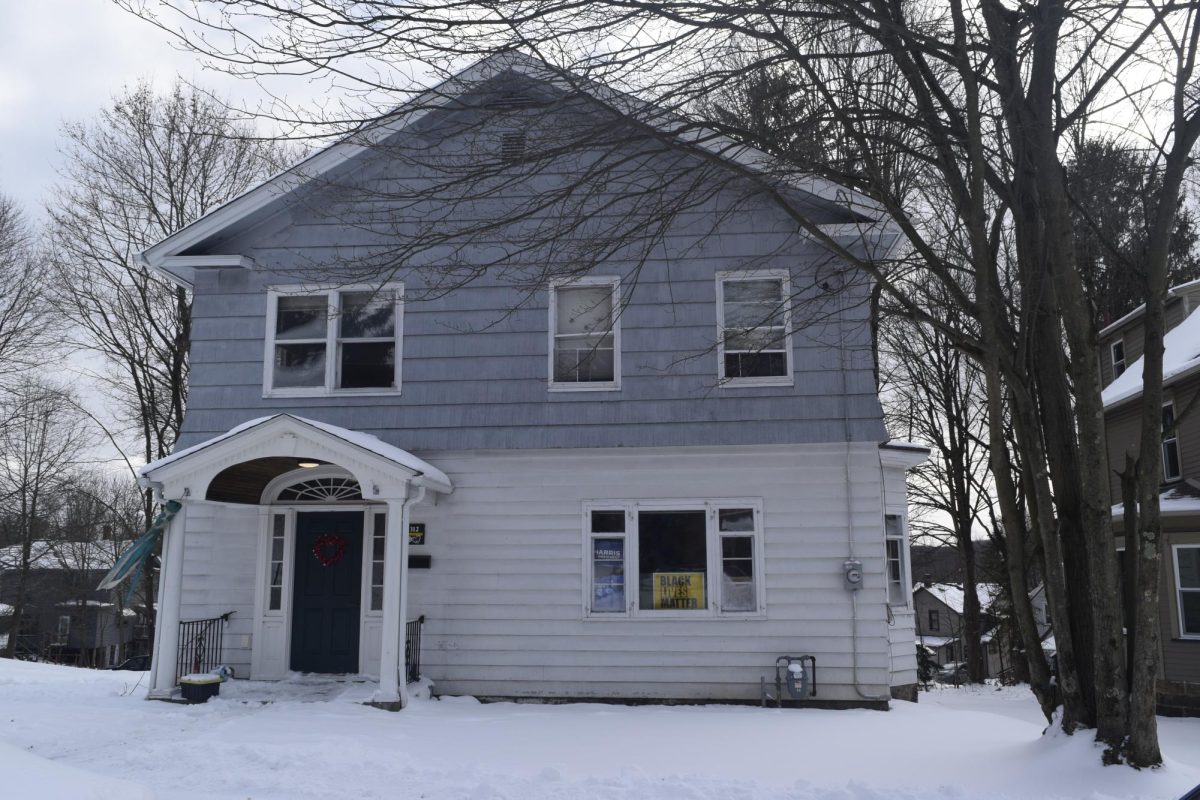
Gallery • 2 Photos
Story continues below advertisement
0
More to Discover
About the Contributor
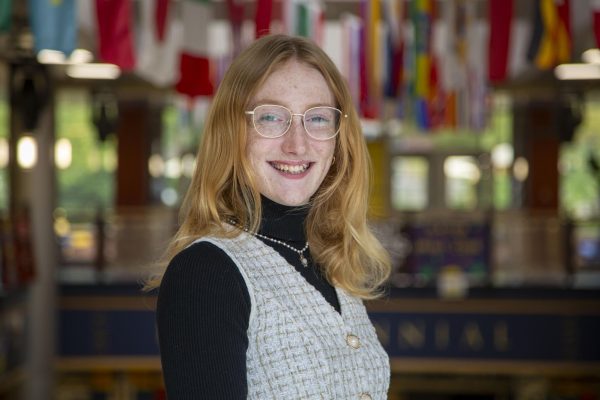
Kat Pointer, Staff Writer
“Katherine (Kat) Pointer is a senior, graduating in May 2025. Majoring in Business and minoring in Creative Writing, this is her first year as a Staff Writer. When not writing for The Campus, you can find her writing poetry and prose, or outside with a good book. Kat has had her poetry published in Allegheny’s Overkill magazine and her fiction published in The Allegheny Review.







